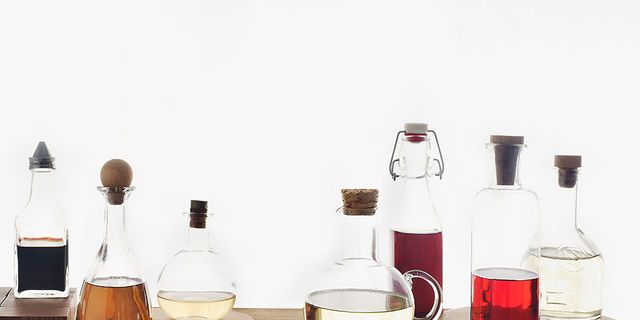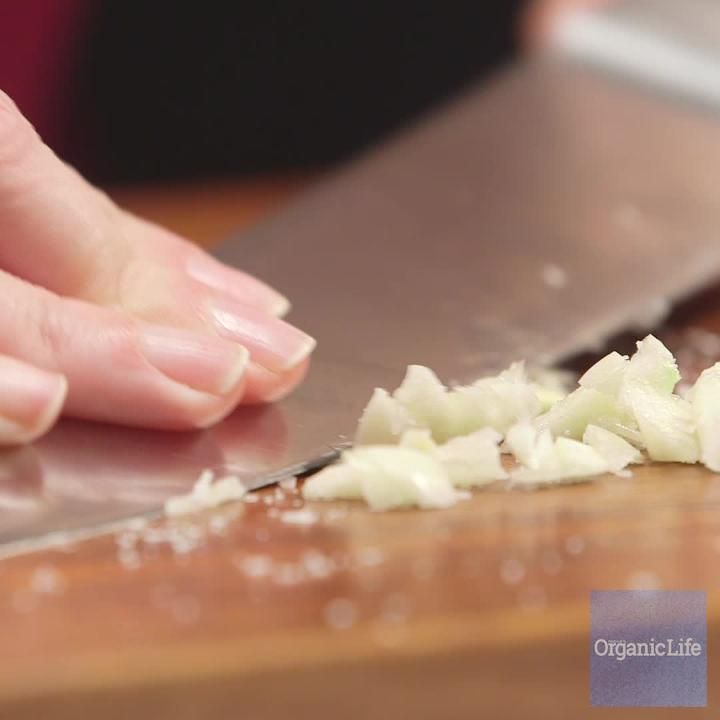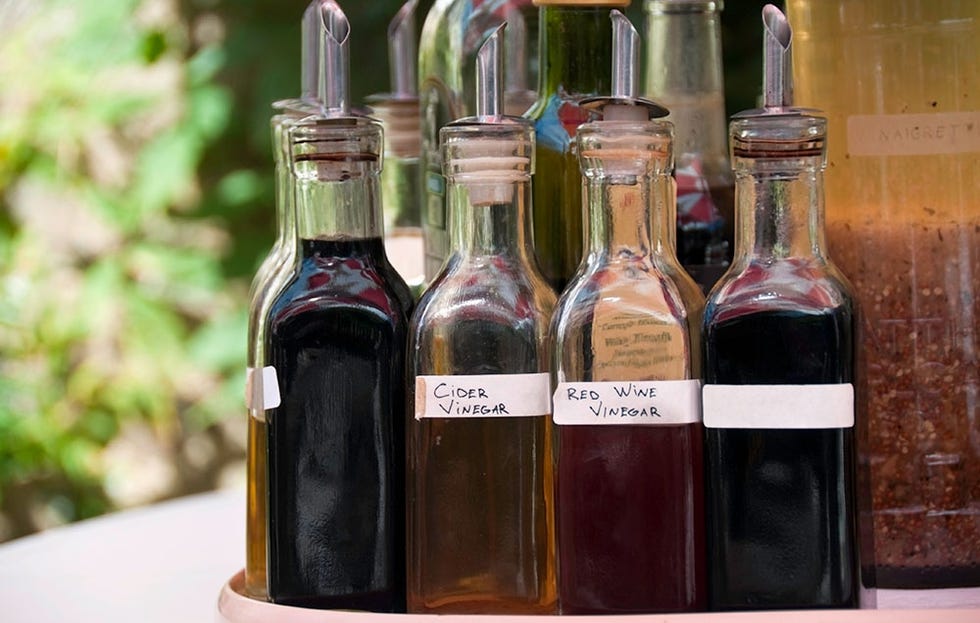Most of us think of vinegar as something you buy in the bottle at the store, and have never considered making it from scratch. That’s a shame, because making your own is very easy, and it can be a great way to turn the last bits of wine, juice, or any other leftover beverages you might have into something useful. Plus, since most store-bought vinegars are made from crops (like sugar) that can be genetically modified, making your own ensures that your salad dressings (or cleaning products) are 100 percent GMO free.
Related: How To Make Homemade Vanilla Extract
At its simplest, making vinegar is as easy as taking any beverage that contains ethanol, a.k.a. alcohol (beer, wine, and hard cider) or sugar (fruit juice or just plain-old sugar water) in a clean, wide-mouthed glass or stainless steel container in a dark place. The magic behind this transformation is acetic acid bacteria, which is ubiquitous in nature and in unpasteurized, fermented foods. Give acetic acid bacteria a solution of 5.5 to 7 percent ethanol in water, plenty of oxygen, comfortable temperatures, and darkness, and they will soon give you vinegar.
Related: How To Make Your Own Kimchi
Doing this, however, will leave you with a vinegar that most of the time will have, shall we say, an undesirable taste and aroma. Your best bet is to add a "starter" with bacteria that have been proven to make a tasty end product, and that will out-compete the wild ones. An ordinary bottle of unfiltered, unpasteurized vinegar such as Bragg apple cider vinegar will do, or you can get fancy and order vinegar starters or "cultures" from winemaking supply houses. These will come in different flavors, such as red wine, white wine, cider, malt, and mead, and any of them will make a tasty vinegar from your liquid of choice, though the final flavors will vary a little. Once you've made your first batch of homemade vinegar, you can just use some of that to start future batches.
Simple Wine or Malt Vinegar
Use up the last of your party wine, or that last can of beer nobody wants, to make wine or malt vinegar.
Ingredients:
1 part unfiltered vinegar, and
EITHER
2 parts good wine (wine vinegar is only as good as the wine it started from), preferably without added sulfites, and 1 part water
OR
3 parts good beer, ale, lager, you name it, without preservatives
Directions:
Combine the vinegar with your wine and water, or with the beer, in a large, clean, wide-mouthed glass or stainless steel container. Cover the top with cheesecloth or other clean, thin cloth to keep out flying insects (most notably the small flies I grew up calling “fruit flies” and now know are rightly called "vinegar flies" for reasons that will become obvious once you start a batch). Place the container in a dark, room-temperature place, perhaps not right in the kitchen, as a certain vinegary aroma is associated with the process.
After a few days, you should see a smooth, leathery, grayish film forming; this is normal. It's the cellulose the bacteria produce and is called the "mother.” After a few weeks, take a taste of the liquid and see if it is to your liking. The bacteria will stop working once all the ethanol has been turned into acetic acid, but you can stop the process at any point before and until then.
When it's ready, strain into clean jars through an unbleached coffee filter and store in the fridge. You can also pasteurize it so it will keep at room temperature: Set the jars in a large pot of cold water on the stove, bring the water slowly just to simmering and turn it off. Cap the jars, take them out of the water, and let them cool. Keep one container of unpasteurized vinegar in the fridge to use for your next starter.
Apple Cider Vinegar
Ingredients:
½ gallon organic unfiltered, unpasteurized apple cider
1 packet wine yeast
2 cups unfiltered vinegar
1 large toy balloon
Directions:
Pour the cider into a clean one-gallon jug, stir in the yeast, and stretch the neck of the balloon over the opening of the jug. This makes a simple airlock that will give the fermentation gasses a place to go without allowing any oxygen back into the jug.
Place the jug where it will stay at room temperature. You will soon see small bubbles rising up through the cider, and the balloon will start to inflate. The cider will ferment for about two weeks. Keep an eye on the balloon: If it is getting huge, you can pull its neck away from the jug neck briefly in one spot to vent some of the excess gas. Once the bubbles have disappeared or have diminished to just a few, pour the cider to a large, clean wide-mouthed glass or stainless steel container, add the unfiltered vinegar, and proceed as for Simple Wine Vinegar.
Homemade White Vinegar
Some commercial white vinegars are made from ethanol that was synthesized from petroleum rather than from food—not exactly what you want to be eating or cleaning with. Read the fine print, call the company, and ask what they make it out of, or make your own to be sure.
Ingredients:
½ gallon water
1¾ cups sugar (organic sugar is GMO-Free)
1 packet wine yeast (or baking yeast in a pinch)
2 cups unfiltered vinegar
1 large toy balloon
Directions:
Heat the water and sugar in a large pot on the stove, stirring until the sugar is completely dissolved. Allow the sugar water to cool somewhat (about 110 degrees F is good; much hotter than that and you will kill the yeast when you add it). Proceed as for apple cider vinegar above.














